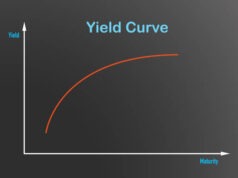
Without the appropriate organizational structures, it can be increasingly difficult for businesses to drive digital transformation. In addition, the right organizational structures can help businesses better to align their resources and capabilities with their strategic objectives.
When designing organizational structures for digital transformation, businesses should consider several factors, including:
- The nature of the business and its existing organization structures
- The type of digital transformation
- The role of technology in the digital transformation process
- The impact of digital transformation on the workforce
Today, we’ll discuss each of these in greater detail and goals to keep in mind for implementing organizational structures that drive digital transformation. If you’re a leader who wants to take your understanding of topics relating to digital transformation to the next level, consider registering for a digital transformation course. There, you can learn from experts and gain a comprehensive understanding of how to drive digital transformation within your organization.
Implementing Organizational Structures That Drive Digital Transformation
Now, let’s return to the topic at hand: organizational structures for digital transformation.
Types of Organizational Structures
Let’s begin by discussing different types of organizational structures. The type of organizational structure that a business chooses should be based on the specific needs and objectives of the business.
Here’s a bit more about three of the most common organizational structures: functional, divisional, and matrix.
Functional structure
A functional structure is the most traditional type of organizational structure. In this type of structure, employees are grouped together based on their skillset or area of expertise. For example, all marketing employees might be grouped in the same department.
When it comes to driving digital transformation, a functional structure can be beneficial because it allows employees with the same skill sets to work together more closely. Additionally, this structure can make it easier to implement new technologies or processes because employees responsible for those specific tasks can be grouped together.
Divisional structure
A divisional structure is similar to a functional structure in that employees are grouped together based on their skillset or area of expertise. However, in a divisional structure, employees are also grouped into divisions based on other factors, such as geography or product line.
This type of structure can be beneficial for businesses undertaking digital transformation because it allows for greater flexibility and adaptability. It can also help businesses better align their resources with their strategic objectives.
Matrix structure
Finally, a matrix structure is a more complex type of organizational structure in which employees are grouped together based on both their skillset and the specific project or task they are working on. For example, an employee might be part of the marketing team but also work on a project for the sales team.
Matrix structures can be helpful for businesses undertaking digital transformation because they allow for more collaboration between employees with different skill sets. This type of structure can also help businesses better align their resources with their strategic objectives.
Factors to Consider When Designing Organizational Structures for Digital Transformation
As we noted earlier, businesses should consider a number of factors when designing organizational structures for digital transformation.
These include:
1. The nature of the business and its existing organizational structures
Businesses must first consider the nature of the business and its existing organizational structures when designing new structures for digital transformation. For example, a manufacturing company might have a very different structure than a software company. Additionally, businesses should consider whether their existing structures are conducive to change or if they will need to be completely redesigned.
2. The type of digital transformation being undertaken
The organizational structures appropriate for one type of digital transformation may not be appropriate for another. For instance, a company undergoing a customer-facing digital transformation will need to emphasize customer-centricity more than a company undergoing an internal digital transformation.
3. The role of technology in the digital transformation process
Technology plays a crucial role in digital transformation, and it’s important to consider how it will fit into the new organizational structures. For instance, will certain technologies need to be developed or acquired? Will there be a need for new IT infrastructure?
4. The impact of digital transformation on the workforce
Digital transformation can have a significant impact on the workforce. It can, for example, lead to job losses or the creation of new jobs. Therefore, it’s vital to consider how digital transformation will impact the workforce when designing organizational structures. This includes factors such as training and retraining and the need for new policies and procedures.
Key Goals for Implementing Organizational Structures
Organizational structures for digital transformation can vary widely, depending on the business’ needs. However, businesses should prioritize a few general goals when designing their organizational structures.
Aligning resources and capabilities with strategic objectives
One of the key goals of organizational restructuring for digital transformation is to align resources and capabilities with strategic objectives. This means ensuring the right people are in the right roles and have the necessary skills and knowledge to support the business’ digital transformation goals.
Focusing on customer needs
As we noted earlier, it’s essential for many businesses to focus on customer needs when designing organizational structures for digital transformation. This means putting the customer at the center of all decision-making and ensuring that all processes and procedures are designed with the customer in mind.
Enabling agility
Another critical goal of organizational restructuring is enabling agility. In today’s fast-paced business environment, it’s essential to be able to adapt to changes in the market rapidly. This means having organizational structures in place that allow for quick decision-making and rapid implementation of new initiatives.
Creating a culture of innovation
Finally, it’s advantageous to build a culture of innovation within your organization when it comes to digital transformation. This means encouraging experimentation and even risk-taking. It also means providing them with the necessary resources and support to do so. To do this, business leaders can focus on creating an organizational structure that encourages and supports innovation.
Final Thoughts
As we’ve seen, organizational restructuring is a critical part of digital transformation. However, keeping a few key goals in mind when redesigning organizational structures is important. These include aligning resources and capabilities with strategic objectives, focusing on customer needs, enabling agility, and creating a culture of innovation. By keeping these goals in mind, businesses can create organizational structures supporting their digital transformation efforts.


































